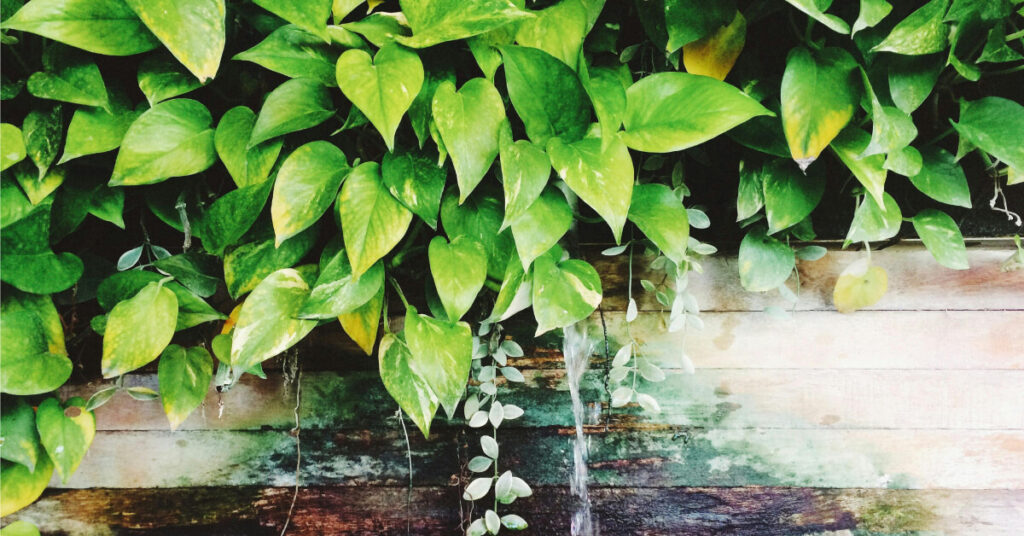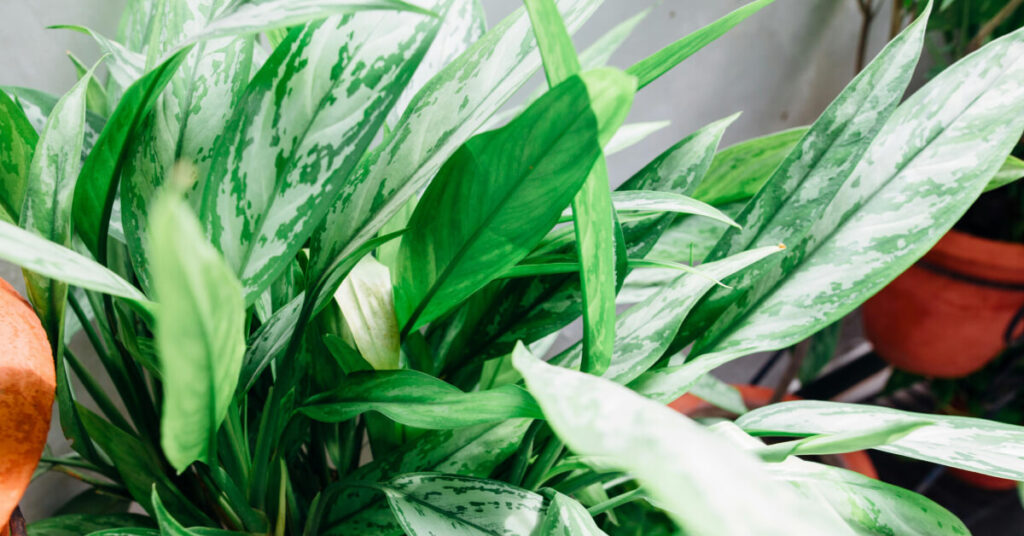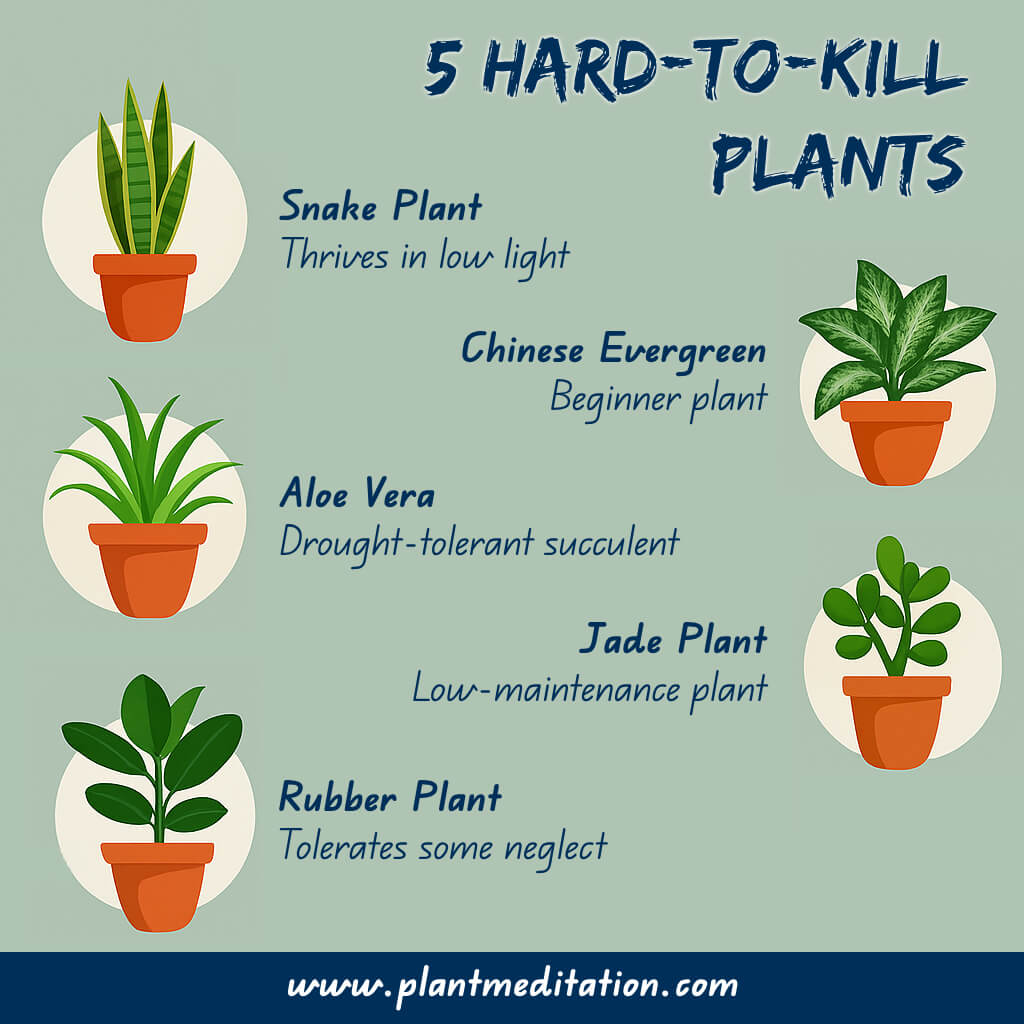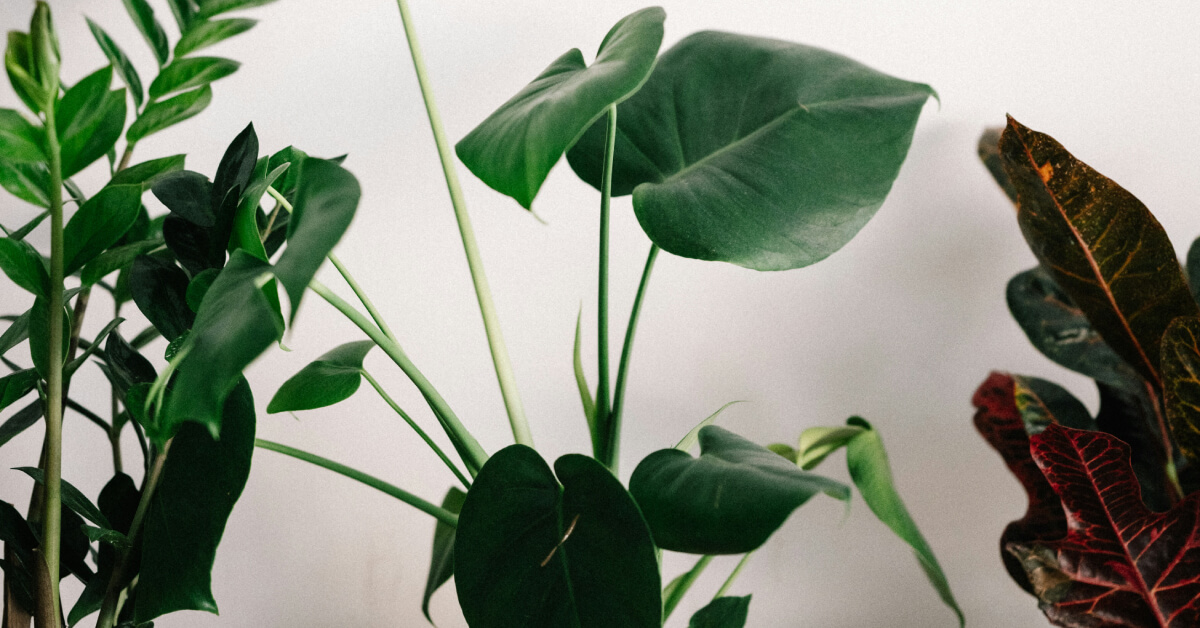What Makes a Plant Hard to Kill?
Choosing the right plants can make all the difference in maintaining a healthy indoor garden. Hard-to-kill plants are ideal for individuals who might forget to water or have limited time for regular plant care. These plants possess certain qualities that make them exceptionally resilient and forgiving.
A key feature of these plants is their drought tolerance—they can go for extended periods without water, making them perfect for those who don’t have the time to water regularly. Additionally, many hard-to-kill plants are adaptable to a range of light conditions, from low light to bright, indirect sunlight. These plants are also resistant to common pests and diseases, which means they require fewer treatments and care interventions. Most importantly, they have a forgiving nature, meaning that even if neglected for a while, they can bounce back with minimal effort.
Best Hard-to-Kill Indoor Plants
Several plants are particularly known for their resilience and minimal care requirements. Here are some of the best options to consider:
Snake Plant (Sansevieria trifasciata)
Why it’s great: The snake plant is one of the toughest houseplants, capable of thriving in low light and infrequent watering. Its upright, sword-like leaves make it a striking addition to any room, while its ability to tolerate neglect makes it a low-maintenance choice.
Light needs: It thrives in low to bright, indirect light.
Watering: Only needs watering every 2-3 weeks.
Bonus: Known for its air-purifying qualities, the snake plant releases oxygen at night, making it especially beneficial for bedrooms.
ZZ Plant (Zamioculcas zamiifolia)
Why it’s great: The ZZ plant can survive in low light and dry conditions, making it nearly indestructible. It is well-suited for those who travel often or have a busy lifestyle.
Light needs: It thrives in low to medium light.
Watering: Water every 2-3 weeks.
Bonus: It stores water in its rhizomes, making it drought-resistant.
Pothos (Epipremnum aureum)

Why it’s great: The pothos is a fast-growing, trailing plant that can thrive in a variety of lighting conditions and is tolerant of irregular watering. It’s a great choice for those who want a low-maintenance plant with quick growth.
Light needs: Suitable for low to bright, indirect light.
Watering: Requires watering about once a week.
Bonus: It can be grown in either water or soil, adding flexibility for different home environments.
Spider Plant (Chlorophytum comosum)
Why it’s great: The spider plant is known for its resilience, growing easily in most indoor conditions. It produces baby plantlets that can be propagated easily, making it a great plant for sharing with others.
Light needs: Prefers low to bright, indirect light.
Watering: Water once a week.
Bonus: This plant is also pet-friendly, making it safe for households with animals.
Cast Iron Plant (Aspidistra elatior)
Why it’s great: As its name suggests, the cast iron plant is highly durable and survives even under neglectful care. It thrives in dim spaces and can tolerate fluctuations in temperature.
Light needs: It thrives in low to medium light.
Watering: Water every 2-3 weeks.
Bonus: The cast iron plant is excellent for places with poor lighting and is perfect for low-maintenance households.
Peace Lily (Spathiphyllum)
Why it’s great: The peace lily is forgiving and lets you know when it needs water by drooping. This makes it an ideal choice for individuals who occasionally forget to water their plants.
Light needs: It grows well in low to medium light.
Watering: Water once a week.
Bonus: Peace lilies are highly effective at purifying the air.
Caution: Peace lilies are toxic to pets if ingested, so care should be taken when placing them around animals.
Rubber Plant (Ficus elastica)
Why it’s great: The rubber plant is known for its glossy, dark green leaves and easy care requirements. It tolerates some neglect, making it ideal for those who aren’t able to commit to daily plant care.
Light needs: Prefers bright, indirect light.
Watering: Water every 1-2 weeks.
Bonus: This plant thrives with minimal watering, making it a reliable indoor plant.
Chinese Evergreen (Aglaonema)

Why it’s great: The Chinese evergreen thrives in low light and high humidity, making it ideal for bathrooms or other humid spaces. It’s also a great beginner plant due to its easy care and colorful foliage.
Light needs: Low to medium light works best for this plant.
Watering: Water once a week.
Bonus: It comes in a variety of beautiful colors and patterns, adding a decorative touch to any room.
Aloe Vera
Why it’s great: Aloe vera is a drought-tolerant succulent that requires little care and can thrive in sunny spots. Its medicinal properties—especially the soothing gel inside its leaves—make it a popular choice for both beauty and health.
Light needs: Aloe vera requires bright, indirect to direct light.
Watering: Water every 3 weeks.
Bonus: The gel inside its leaves is great for skin care and minor burns, making it a useful plant to have around.
Jade Plant (Crassula ovata)
Why it’s great: The jade plant is a hardy succulent that requires minimal care and occasional watering. Known for its ability to thrive on neglect, it’s perfect for people looking for a long-lasting, low-maintenance plant.
Light needs: It thrives in bright, indirect light.
Watering: Water every 2-3 weeks.
Bonus: Jade plants are often associated with good luck and prosperity, making them a popular choice for homes and offices.

How to Keep Hard-to-Kill Plants Thriving
Even plants that are notoriously easy to care for need some attention to ensure they stay healthy and vibrant. Here are some key tips for maintaining these low-maintenance plants:
Water Sparingly
Overwatering is one of the most common mistakes that leads to plant health issues. Always check if the top 2 inches of soil are dry before watering. This ensures you don’t overwater, which can lead to root rot or other problems. Some plants, such as succulents, require even less water and can go weeks without being watered.
Choose the Right Spot
Even low-maintenance plants need some light to thrive. Even if a plant is considered “low-light,” it will still need some ambient light to grow. Place your plants in well-lit areas to provide the necessary light for growth, but be mindful of placing them in direct sunlight, which may burn their leaves.
Use the Right Pot and Soil
Ensure that you always use pots with drainage holes to allow excess water to escape and prevent root rot. When repotting or planting, use well-draining soil, especially for succulents and cacti, to ensure proper water retention and drainage.
Skip Frequent Fertilizing
Low-maintenance plants generally don’t need to be fertilized frequently. In fact, over-fertilizing can harm your plants. Feed them only once every few months, or as needed, and always use a balanced fertilizer to avoid nutrient imbalances.
Wipe Leaves Occasionally
Dust can accumulate on plant leaves over time, blocking sunlight absorption and impeding the plant’s ability to photosynthesize effectively. Wipe down leaves with a damp cloth every month to ensure they can absorb light efficiently.
By following these simple guidelines, you can keep your hard-to-kill plants thriving with minimal effort, enjoying lush greenery without the stress of constant care.

